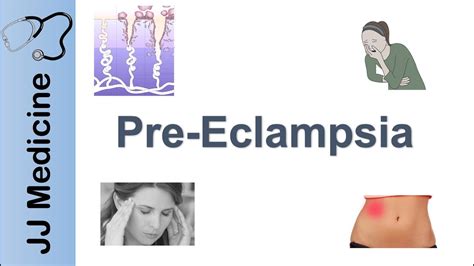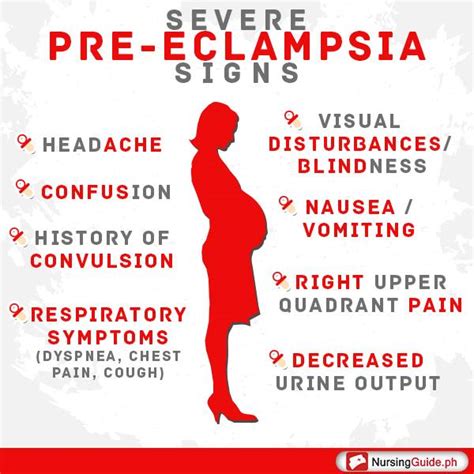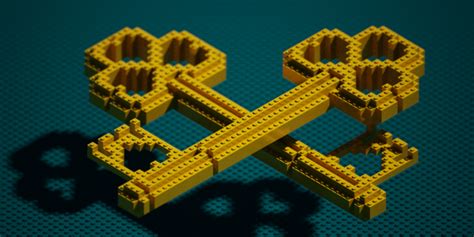The journey of pregnancy is a complex and delicate process, filled with excitement, anticipation, and for some, unforeseen challenges. One of the conditions that can complicate pregnancy is pre-eclampsia, a pregnancy complication characterized by high blood pressure and signs of damage to another organ system, most often the liver and kidneys. Pre-eclampsia can lead to serious complications for both the mother and the baby if not promptly recognized and managed. Therefore, understanding the early signs and symptoms of pre-eclampsia is crucial for all pregnant women.
Introduction to Pre-eclampsia
Pre-eclampsia is a condition that typically develops after 20 weeks of gestation. It is marked by the onset of hypertension (high blood pressure) and often accompanied by proteinuria (excess proteins in the urine), indicating kidney damage. The exact cause of pre-eclampsia remains unclear, but it is believed to involve the placenta and the development of an abnormal placenta that doesn’t function properly. This leads to a release of factors into the mother’s bloodstream that cause blood vessels to constrict, leading to high blood pressure and other complications.
Identifying Early Signs of Pre-eclampsia
Recognizing the early signs of pre-eclampsia is vital for timely medical intervention. Some of the signs and symptoms may be subtle and similar to those experienced in a normal pregnancy, making it crucial for pregnant women to be closely monitored by their healthcare providers. Key early signs to look out for include:
- High Blood Pressure: This is the most characteristic sign of pre-eclampsia. Pregnant women should have their blood pressure checked regularly, as high blood pressure can often be present without noticeable symptoms.
- Protein in the Urine (Proteinuria): The presence of an abnormal amount of protein in the urine is another hallmark of pre-eclampsia. Like high blood pressure, it may not cause noticeable symptoms but can be detected through urine tests.
- Severe Headaches: Headaches can be a symptom of pre-eclampsia, especially if they are severe and persistent.
- Vision Changes: Some women may experience vision changes, including blurred vision, double vision, or sensitivity to light.
- Pain in the Upper Right Abdomen: This can be a sign of liver dysfunction, which can occur in pre-eclampsia.
- Nausea and Vomiting: While common in early pregnancy, in the context of other symptoms, nausea and vomiting can be indicative of pre-eclampsia.
- Sudden Weight Gain: A sudden and significant weight gain (more than 2 pounds a week) can be a sign of fluid retention, which is associated with pre-eclampsia.
- Swelling (Edema): While swelling in the feet, hands, and face is common in pregnancy, sudden or severe swelling can be a symptom of pre-eclampsia.
Understanding the Risks and Complications
Pre-eclampsia can lead to severe complications if not managed properly. Some potential risks and complications include:
- Eclampsia: This is the onset of seizures in a woman with pre-eclampsia, which can be life-threatening for both the mother and the baby.
- Placental Abruption: Pre-eclampsia increases the risk of placental abruption, where the placenta separates from the uterus.
- Preterm Birth: Babies born to mothers with pre-eclampsia may need to be delivered early, which can lead to complications related to prematurity.
- Growth Restriction: The placenta’s dysfunction can impair the baby’s growth.
Div class=“expert-insight”> boxes for Key Information
Early detection and management of pre-eclampsia are crucial for preventing serious complications. Regular prenatal check-ups are essential for monitoring blood pressure and urine protein levels. If you are pregnant and experience any of the symptoms mentioned, do not hesitate to contact your healthcare provider.
Prevention and Management Strategies
While there’s no guaranteed way to prevent pre-eclampsia, certain lifestyle modifications and close monitoring can help manage the condition and reduce its severity:
- Regular Prenatal Care: Regular visits to your healthcare provider are crucial for early detection of pre-eclampsia.
- Blood Pressure Monitoring: Keep track of your blood pressure at home if your provider advises it.
- Healthy Diet and Lifestyle: Maintaining a healthy diet and engaging in regular physical activity as advised by your healthcare provider can support overall well-being during pregnancy.
- Rest and Stress Management: Getting enough rest and managing stress can also contribute to a healthier pregnancy.
Comparative Analysis of Pre-eclampsia Management Strategies
| Strategy | Description | Benefits |
|---|---|---|
| Close Monitoring | Regular prenatal check-ups and monitoring of blood pressure and urine protein levels. | Early detection and management of pre-eclampsia. |
| Lifestyle Modifications | Maintaining a healthy diet, engaging in regular physical activity, and managing stress. | Supports overall well-being during pregnancy and may reduce the severity of pre-eclampsia. |
| Rest and Relaxation | Prioritizing rest and engaging in stress-reducing activities. | Contributes to a healthier pregnancy and may help manage pre-eclampsia symptoms. |

Conclusion
Pre-eclampsia is a serious condition that requires prompt recognition and management to prevent complications for both the mother and the baby. By understanding the early signs and symptoms and engaging in regular prenatal care, pregnant women can work closely with their healthcare providers to ensure the best possible outcomes. Remember, every pregnancy is unique, and vigilance along with a proactive approach to health can make a significant difference in managing pre-eclampsia.
What are the first signs of pre-eclampsia?
+The first signs can include high blood pressure and protein in the urine, often without noticeable symptoms. Other signs may include severe headaches, vision changes, and pain in the upper right abdomen.
How often should blood pressure be checked during pregnancy?
+Blood pressure should be checked at every prenatal visit, as frequent monitoring is key to early detection of pre-eclampsia.
Can pre-eclampsia be prevented?
+While there is no guaranteed way to prevent pre-eclampsia, maintaining a healthy lifestyle, including a balanced diet and regular physical activity, and attending regular prenatal check-ups can help in early detection and management.
What are the risks of pre-eclampsia for the baby?
+Pre-eclampsia can lead to premature birth and growth restriction, among other complications. It’s essential for pregnant women with pre-eclampsia to be closely monitored by their healthcare provider to minimize risks to the baby.


